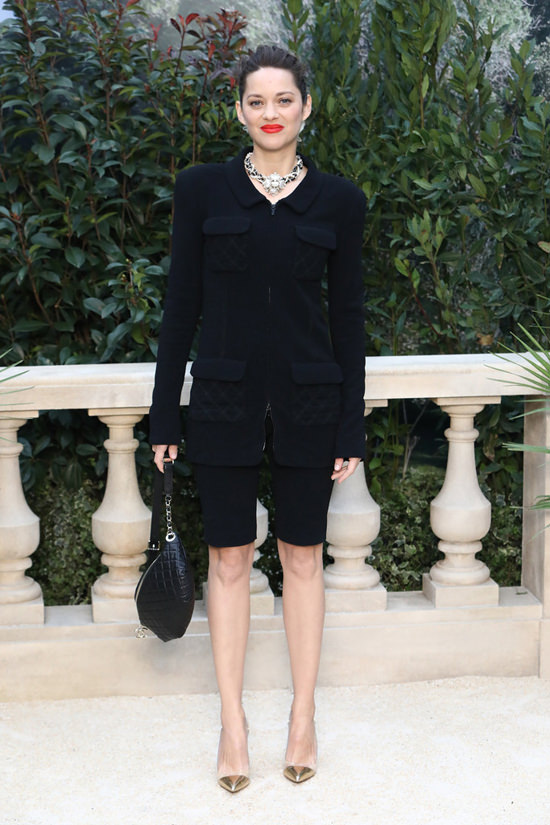Navigating Anti-Semitism Allegations: My Resilience Against Unfounded Attacks
Writing a novel has many challenges. For me, the challenge is researching the subject matter to ensure the content is factually correct. Another challenge is fact-checking sensitive topics such as race, religion, and anything controversial to avoid offending marginalized communities. The latter was especially vital for me in my latest suspense thriller, Jam Run, as it dealt with hot-button topics such as homophobia and sexual assault.
Despite a conscious effort to ensure all my I’s were dotted and all my T’s were crossed, I was surprised when a podcaster accused me of anti-Semitism. More specifically, I inserted anti-Semitic tropes in Jam Run. In the past, I’ve received negative reviews and have also been the victim of trolls like every author—which I usually ignore. However, this allegation was too serious to brush off.
To avoid making this essay personal, I won’t name the woman who made the allegation. For the sake of this blog, I’ll call her Jane Doe. To avoid spoiling Jam Run, I won’t mention the Israeli character’s name.
Jane Doe—who is Jewish—was referred to me by my publicist. She has a podcast and was interested in reading Chill Run and Jam Run. About a month after Jane Doe received my books, she contacted me and invited me to join her for coffee. When we met, Jane Doe then told me her thoughts about both books. Her first impression was they were a bit violent. I responded, explaining that crime novels inspired by actual violent events rarely aren’t—a fact she appeared to accept.
She then dropped the bombshell, saying she was uncomfortable with me introducing a female Israeli villain and the attention I brought to her classy outfit. This character is introduced in the epilogue of Jam Run. According to Jane Doe, the expensive outfit the character wore is an anti-Semitic trope because it perpetuates the stereotype that all Jews are wealthy.
According to the International Holocaust Remembrance Alliance (IHRA), they define anti-Semitism as: “A certain perception of Jews, which may be expressed as hatred toward Jews. Rhetorical and physical manifestations of anti-semitism are directed toward Jewish or non-Jewish individuals and/or their property, toward Jewish community institutions and religious facilities.”
I thought Jane Doe was joking, and my first instinct was to look around to see if I was on a candid camera TV show. However, it turned out she was serious. For the rest of our meeting, I struggled to see things from Jane Doe’s point of view. However, I kept calm and responded by discussing my artistic approach regarding characters to reasonably explain why this character wore the outfit.
My artistic approach
As an author, it’s essential to learn from your mistakes so you can evolve. I told Jane Doe after my first book, Pandora’s Succession, was published, my readers were more drawn to Ridley Fox—the male protagonist. Based on the reviews, Doctor Nita Parris—the female co-protagonist—was not as popular. I expected female readers to be drawn more to her, but that was not the case.
In exploring solutions to make Doctor Parris more attractive to women readers, I thought outside the box and binge-watched a popular TV show called Sex and The City. I aimed to study the four female protagonists to help me improve Doctor Parris’s character. One of the biggest takeaways was the show’s focus on fashion and designer clothes. Therefore, while writing The Demeter Code, I gave Doctor Parris a killer fashion sense. When the reviews came out, it was clear the minor adjustments made Doctor Parris a hit among female readers.
This is why I applied the same approach to my Israeli character and others. A critical writing technique I learned from my writing coach was to show and not tell. Even though this character was very minor—with a few lines of dialogue, it was vital to make an impression to show readers that she’ll become a potential threat to my protagonist, Eddie Barrow, in a future novel.

When creating characters, I pretend I’m a casting director. For the Israeli character, I modelled her after French actress, Marion Cottilard. For the scene in which this character appeared, I asked myself, “What would Marion Cottilard wear?” Since I’m not a fashion expert, I had to be creative. So, I Googled photos of Marion Cotillard and found a suitable outfit.
I even reminded Jane Doe that one of the Jam Run’s main villains, Stepmother, worked for the same organization as my Israeli character. I stressed that Stepmother is a Black woman, another villain described as being a cross between Alfre Woodard and Viola Davis. Throughout the story, Stepmother wore different outfits–some of which would be pricey.
By Jane Doe’s logic, I’d be perpetuating a racist stereotype that Black women who wear expensive outfits are criminals. When I mentioned this to her, she was incapable of responding. She even admitted she did not know who Alfre Woodard was.
I emphasized another villain because Jam Run has multiple villains. This is why it’s relevant to quote the IHRA when they mentioned:
“[Anti-Semitic] Manifestations might include the targeting of the state of Israel, conceived as a Jewish collectivity. However, criticism of Israel similar to that levelled against any other country cannot be regarded as anti-Semitic.“
The main villains in Jam Run are not Jewish. There also wasn’t any mention or reference in the story that a reasonable reader would interpret as being a criticism or an attack against Israel. Considering the multiple villains who were more prominently featured than my Israeli character—who was limited to a few paragraphs at the end of the story, a reasonable person would not interpret her appearance as a form of anti-Semitism.
As I mentioned earlier, it’s essential to show and not tell when describing a character or a situation. Focusing on my Israeli character’s clothes and that she called the shots demonstrated her leadership role in this organization. Common sense would dictate that a supervillain with a specific leadership status within a powerful organization wouldn’t be shopping at Wal-Mart.
Another fact I mentioned to Jane Doe was that I gave minute details on this character’s background. I did this deliberately to peak the curiosity of readers so they would look forward to the next book in the series. And even though I mentioned she was Israeli, I never mentioned anything about her religious background. Furthermore, I reminded Jane Doe that not everyone from Israel is Jewish. My Israeli character could even be an atheist.
Had I not been blindsided by her allegations of anti-Semitism, I would’ve asked Jane Doe if she had ever watched an episode of Curb Your Enthusiasm. Since she was bothered that my Israeli character wore an expensive outfit, I wonder how she feels about Larry David creating a show with wealthy Jewish characters. By Jane Doe’s logic, Larry David would be the biggest Jewish anti-Semite in Hollywood.
Jane Doe’s Counterargument
After dismantling Jane Doe’s argument, she countered with another. This one concerned a villain whose surname was Weiss. Even though there‘s more than one villain in Jam Run, she argued that it was anti-Semitism to have a Jewish villain.
Honestly, the comment came so far out of left field, I was in such a state of disbelief that I could not respond with a proper counter-argument. Jane Doe even dared to tell me that I needed to do a better job researching the surnames of my characters.
Our meeting ended shortly after when Jane Doe told me she would need to consider whether she would have me on her podcast.
The following 24 hours were a whirlwind of emotions. I tried very hard to see the story from Jane Doe’s point of view. I was incapable of sleeping that night because I wondered whom Jane Doe would’ve shared her opinions with and how this could impact my reputation and career.
The following morning, I sent Jane Doe an email reiterating my arguments. I even shared the photo of Marion Cotillard wearing the same outfit my Israeli character wore. I did this to prove that I wasn’t making things up about my artistic approach.
Jane Doe never replied.
I spoke to some of my closest friends about the situation—two of them were Jewish. They unanimously disagreed with Jane Doe. In fact, they told me one could not expect a woman working in a leadership position for a powerful and influential criminal organization to be shopping at a thrift store—especially when they are working in specific environments or showing their status.
As for the Weiss surname, two of them told me that even though Weiss has its origins among the Ashkenazi Jews in Germany, it’s also a common surname among non-Jews.
I researched the Weiss surname and found facts that corroborated what my friends told me. One of them is an online quote from someone named Elana Najman. According to her profile on Quora.com, she studied Jewish Studies. She wrote:

Yes, but it’s even more common among non-Jews. Ashkenazi Jews didn’t have surnames until the 18th century, when they were required by law for the first time to register their names with the non-Jewish state. Since they were already using patronymics and matronymics, most people took on Yiddish/Germanic or Slavic versions of the names they were already using.
But not everyone did. Some people used place names as sources or words describing something about them or related to their work.
Someone named Weiss might be Jewish, but since that’s just a German word meaning “white,” it’s no real indicator that the person with that name is Jewish.
I tried to find Najman’s contact info to learn about her sources but was not successful. However, Najman’s claims are corroborated by Forebears.io. The website provides several statistics about the Weiss surname. The biggest takeaway from this website was that 50% of Irish citizens with the Weiss surname are Catholic. 100% of the Weiss’s in Kenya are Christian.
As I mentioned earlier, Jane Doe had the audacity to tell me I needed to do a better job researching character surnames. Yet, the facts prove that she’s the one who should’ve studied the Weiss surname before accusing me of anti-Semitism. Had she done so, she would’ve considered my villain was most likely of German or Irish ancestry.
My next step.
I contacted my publicist—who is Jewish. This was vital because, as her client, it was in her best interest to know what Jane Doe said to me. In response to my Israeli character, my publicist also said a woman in her position wouldn’t be shopping at Wal-Mart. She also told me that Weiss is also a German surname. Since she and Jane Doe are friends, my publicist did not believe Jane Doe had malicious intent. However, she admitted that her anti-Semitism opinions were off.
Furthermore, my publicist told me this situation was unfortunate because it could’ve been an excellent discussion topic for her podcast. It would’ve also given me a chance to get ahead of any future unfounded allegations of anti-Semitism from her audience. Since my publicist told me not to worry, I assumed she would talk to Jane Doe.
Since Jane Doe never responded to my last email, I did not make further attempts to contact her. I learned years ago that there are people who are against anything and everything. Even if you present multiple facts that contradict their opinions, they will never acknowledge their errors.
A close friend told me I had a legitimate reason to be offended by Jane Doe’s comments, and I should not have anything to do with her. Since Jane Doe has not apologized for her comments, I’m no longer interested in being a guest on her podcast.





